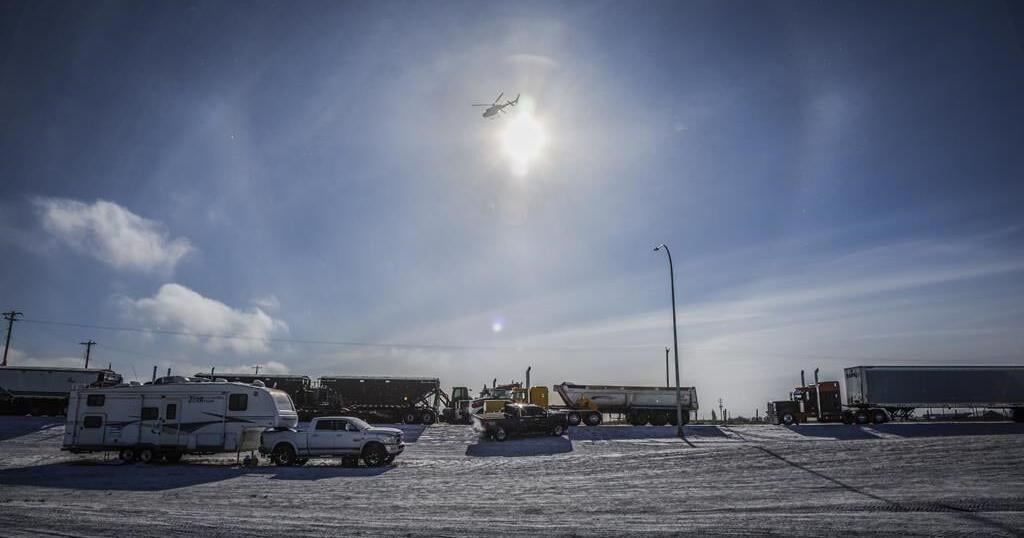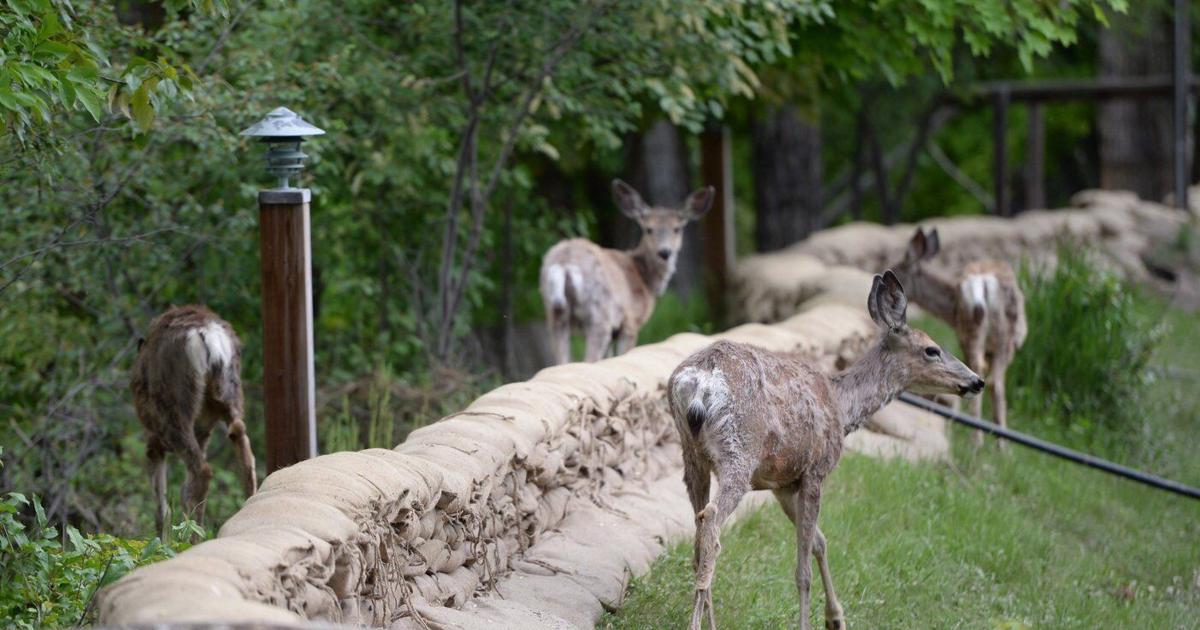LETHBRIDGE, Alta. – One of two men accused of conspiring to kill Mounties at the border blockade at Coutts, Alta., characterized the protest as a last stand and told his mother there “will be a war” if police moved in.
“Mom, I am fine. If they start the violence, I am just telling you there will be war and casualties of war,” read one of the text messages relayed in court Tuesday from Chris Carbert’s phone.
“The sooner you wake up to what’s happening the sooner you’ll understand why I have to do what I have to do.”
Carbert and Anthony Olienick are on trial charged with conspiring to commit murder at the blockade, which tied up traffic for two weeks at the busy Canada-U.S. border crossing at Coutts in 2022 to protest COVID-19 restrictions and vaccine mandates.
Court heard Carbert was determined to see the protest through and that there was no going back.
“Mom I won’t be home until laws are passed and the government is toppled,” he texted her.
She replied, “I thought maybe you would go home for a couple days, then go back.”
Carbert wrote: “I don’t think you truly understand what this is for and about. If we lose here, I will likely die in war.”
Around the same time Carbert was texting his mother, he received a message from someone else telling him to stay calm and that the protest was not worth a criminal record or jail time. The person reminded Carbert he has a son.
Images of guns from Carbert’s phone were also shown Tuesday, with some of the weapons on a couch or a bed.
Last week, the trial heard about texts that painted a similar picture of rage and determination against any who sought to dismantle the blockade.
One message characterized the blockade as “our last stand,” while another person promised to leave only in “a body bag.”
After police made arrests and seized weapons near the blockade, the remaining protesters left Coutts peacefully.
Carbert and Olienick are also charged with mischief and possession of a weapon for a dangerous purpose. Olienick faces a further charge of possessing a pipe bomb.
The Crown has presented witness and physical evidence to argue that Olienick and Carbert were conspiring to kill police.
Officers seized weapons, body armour and ammunition in trailers near the blockade, along with a firearms licence in Carbert’s name.
They later located at Olienick’s home more weapons, buckets of ammunition and two pipe bombs.
The Crown has also presented eyewitness testimony from undercover officers.
The officers, posing as volunteers at the blockade, told court that Olienick said he believed Mounties were the tools of “devil” Prime Minister Justin Trudeau and deserved to be hanged. The officers testified that Olienick said if police raided the blockade, he would “slit their throats.”
In a police interrogation video shown to the jury, Olienick denied targeting police but said he feared an invasion by United Nations troops or Chinese communists.
He characterized himself and others as “sheepdogs” protecting “the flock” from tyrannical invaders.
This report by The Canadian Press was first published July 2, 2024.
— By Jeremy Simes in Regina

























